Table of Contents
Come join us now, and enjoy playing your beloved music and browse through great scores of every level and styles!
Can’t find the songbook you’re looking for? Please, email us at: sheetmusiclibrarypdf@gmail.com We’d like to help you!
Sorabji: In the Hothouse (from Two Piano Pieces) sheet music, Noten, partitura, spartiti 楽譜

Best Sheet Music download from our Library.

Please, subscribe to our Library.
If you are already a subscriber, please, check our NEW SCORES’ page every month for new sheet music. THANK YOU!
Browse in the Library:
Or browse in the categories menus & download the Library Catalog PDF:
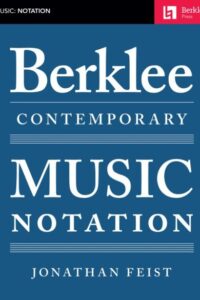
Who was Sorabji?
Kaikhosru Shapurji Sorabji: The Hermit of Modernist Maximalism
In the often-crowded pantheon of 20th-century composers, Kaikhosru Shapurji Sorabji (1892-1988) occupies a unique and enigmatic niche. A composer of staggering ambition, labyrinthine complexity, and self-imposed isolation, Sorabji crafted some of the most monumental, technically demanding, and stylistically idiosyncratic music ever conceived. His work, largely ignored during his lifetime and still challenging audiences today, represents a singular path through modernism – one defined by maximalism, intricate ornamentation, transcendental virtuosity, and a fierce, almost hermetic, independence.

Biography: A Self-Forged Identity
- Birth & Heritage: Born Leon Dudley Sorabji on August 14, 1892, in Chingford, Essex, England. His father was a Parsi engineer from India (thus the Persian-derived name Sorabji), and his mother was English-Spanish. This mixed heritage profoundly shaped his sense of identity, though he felt alienated from both cultures.
- The Name: Around 1914, he legally changed his name to Kaikhosru Shapurji Sorabji. “Kaikhosru” and “Shapurji” were Persian names chosen for their resonance and connection to ancient Persian history and Zoroastrianism, reflecting his deliberate construction of a unique persona.
- Musical Formation: Largely self-taught. He received some piano lessons in his youth but had no formal composition training. His musical education came through voracious listening, score study (especially Bach, Liszt, Busoni, Debussy, Ravel, Scriabin, Szymanowski, Medtner), and wide reading in literature, philosophy, and the occult.
- Early Career & Criticism: Worked as a music critic (under the pseudonym “S. Godfrey”) for outlets like The New Age and The New English Weekly from the 1910s to the 1930s. His critiques were famously acerbic, insightful, and often scathing, particularly targeting English musical provincialism and composers he deemed mediocre (which was most of them).
- The Recluse: Deeply disillusioned by the musical establishment and critical reception to his early performances (which were rare and often controversial), Sorabji gradually withdrew from public musical life starting in the late 1930s. After his mother’s death in 1940, he retreated almost completely to his secluded home “The Eye” in Corfe Castle, Dorset, where he lived with his companion, Reginald Norman Best, until his death. He forbade performances of his music for decades.
- The Ban Lifted: In 1976, pressured by a growing underground interest spearheaded by pianists like Yonty Solomon and Alistair Hinton (who later became his literary executor), Sorabji reluctantly lifted the ban on performances, provided he approved the performer.
- Death: Sorabji died on October 15, 1988, in Winfrith Newburgh, Dorset, leaving behind a colossal legacy of unpublished manuscripts.
Works: Monuments of Sound

Sorabji’s output is vast and overwhelmingly dominated by solo piano music, though he also composed orchestral works, chamber music, organ symphonies, and songs. His works are renowned for their extreme length, density, and technical difficulty, pushing the boundaries of playability.
- Key Masterpieces:
- Opus Clavicembalisticum (1930): His most famous (or infamous) work. A colossal 4+ hour piano epic in 12 movements (including fugues, passacaglias, toccatas, cadenzas), often considered one of the most challenging solo piano works ever written. A summit of contrapuntal complexity and virtuosic display.
- Symphonic Variations for Piano (1935-37): Another monumental work, exploring vast variation forms over an extended duration.
- Sequentia Cyclica super “Dies iræ” ex Missa pro Defunctis (1948-49): A massive cycle of 27 variations on the “Dies Irae” chant, demonstrating his intricate contrapuntal and transformative skills.
- 100 Transcendental Studies (1940-44): True to their name, these studies explore extreme technical and expressive demands far beyond those of Liszt or Chopin.
- Symphonies for Solo Piano: Several exist, including his Symphony No. 2 (“Jāmī”), blending orchestral textures and scope onto the piano.
- Gulistān – Nocturne for Piano (1940): A prime example of his lush, perfumed, and incredibly intricate “Persian”-inspired style.
- Concerti: He wrote several for solo piano and orchestra (e.g., Concerto per suonare da me solo e senza orchestra, per divertirsi), which are symphonic in scale and require superhuman virtuosity.
- Symphonies for Organ: Vast, complex works exploring the sonic possibilities of the instrument.
Analysis of Style: A Universe of Complexity
Sorabji’s style is instantly recognizable yet difficult to categorize. It synthesizes diverse elements into a unique and overwhelming whole:
- Maximalism: This is the defining characteristic. Sorabji embraced extremes:
- Length: Works lasting several hours are common.
- Density: Highly polyphonic textures, often with multiple independent melodic lines woven together in complex counterpoint (influenced by Bach, Busoni).
- Virtuosity: Demands transcendental technique – cascades of notes, complex polyrhythms, wide leaps, immense power, and extreme delicacy. He wrote as if the pianist had four hands.
- Ornamentation: Baroque-like ornamentation (trills, mordents, turns, grace notes) is ubiquitous, often layered and integral to the texture, creating shimmering, kaleidoscopic surfaces (influenced by Scriabin, Szymanowski, Middle Eastern/Persian music).
- Dynamic Range: From barely audible whispers to thunderous, percussive climaxes.
- Harmony: A complex fusion:
- Rooted in late-Romantic chromaticism (Scriabin, Szymanowski, early Schoenberg).
- Freely employed dissonance, clusters, and intricate chord structures.
- Often retained a sense of tonal centers or polarity, even amidst dense chromaticism (unlike strict atonality).
- Incorporated modal inflections, sometimes evoking Persian or Spanish flavors.
- Rhythm: Highly complex and fluid:
- Frequent use of polyrhythms (multiple simultaneous rhythms), cross-rhythms, and nested tuplets (triplets within quintuplets, etc.).
- Tempo often fluctuates wildly, requiring immense control.
- A sense of improvisatory freedom within highly structured forms.
- Form: Often large-scale, complex, and idiosyncratic:
- Favored variations (passacaglias, chaconnes), fugues, toccatas, and intricate multi-movement structures (like the Opus Clavicembalisticum).
- Forms were often expansive and cumulative, building through layered repetition and intensification rather than traditional development.
- Architecture was paramount, even in the densest textures.
- Influences (Assimilated, Not Imitated):
- Ferruccio Busoni: The most profound influence. Busoni’s ideas of “Young Classicism,” the transcendental potential of the piano, the fusion of Bachian counterpoint with modern harmony, and the concept of “Junge Klassizität” resonated deeply. Sorabji dedicated his Opus Clavicembalisticum to Busoni’s memory.
- Franz Liszt: Virtuosity, thematic transformation, large-scale forms, and the symphonic poem concept translated to piano.
- J.S. Bach: Contrapuntal mastery, structural rigor, and the use of forms like fugue and passacaglia.
- Alexander Scriabin: Mysticism, harmonic language, dense textures, and ecstatic climaxes.
- Karol Szymanowski: Sensuous harmony, intricate ornamentation (especially in the “Persian” inspired works like Métopes and Masques), and voluptuous textures.
- Debussy & Ravel: Color, texture, exoticism, and pianistic refinement.
- Mediterranean & Persian Cultures: While not authentically recreating these styles, he evoked their essence through ornamentation, melodic turns, and titles (Gulistān, Jāmī), reflecting his fascination with his Persian heritage and the wider Orient.
- Aesthetic: Sorabji’s music aimed for:
- Transcendence: Pushing beyond perceived limits of instrument, performer, and listener.
- Luxuriance & Opulence: A rich, sensual, almost decadent sound world.
- Intellectual Rigor: Underlying the sensual surface was meticulous structural planning.
- Individualism: A complete rejection of prevailing trends (serialism, neoclassicism, minimalism) in favor of his own uncompromising vision.
Legacy: From Obscurity to Cult Status
Sorabji’s legacy is complex and evolving:
- Decades of Neglect: His self-imposed exile and performance ban meant his music was virtually unknown outside a tiny circle for nearly 40 years. Manuscripts were inaccessible, unplayable, and unpublished.
- The Pioneers (1970s-): The lifting of the ban sparked interest. Pianists like Yonty Solomon, Michael Habermann, Geoffrey Douglas Madge (who made the first complete recording of Opus Clavicembalisticum in 1977), and later Marc-André Hamelin, Jonathan Powell, Fredrik Ullén, and Ronald Stevenson began the monumental task of learning, performing, and recording his works. This required immense dedication and technical prowess.
- Publication & Scholarship: The Sorabji Archive, established by Alistair Hinton (Sorabji’s literary executor), has been crucial in cataloging, editing, and facilitating the publication of scores (primarily by Dover Publications and The Sorabji Music Archive). Scholarly work is gradually increasing.
- Recordings Renaissance: The CD era and digital distribution (YouTube, streaming) have been transformative. Dedicated labels (Altarus, BIS, Toccata Classics, Piano Classics) have released numerous recordings, making this once-inaccessible music available globally. Complete cycles of the 100 Studies and other major works are underway.
- The Cult & The Challenge: Sorabji remains a “composer’s composer” and a cult figure. His music is not mainstream concert fare due to its extreme demands and duration. However, it commands deep respect and fascination among pianists, composers, and listeners drawn to its unique sound world and uncompromising vision. He is seen as the ultimate iconoclast, forging a path utterly independent of 20th-century musical fashions.
- Influence: His direct influence on other composers is hard to pinpoint due to his obscurity, but he stands as a powerful symbol of uncompromising artistic integrity and the exploration of extreme complexity and virtuosity. Composers interested in maximalism, intricate counterpoint, or pushing pianistic limits inevitably encounter his shadow.
- Copyright Controversy: The complex copyright status of his works (involving the Sorabji Archive and publishers) has sometimes been a point of friction within the community of performers and scholars seeking access.
Sorabji: The Solitary Giant
Kaikhosru Shapurji Sorabji was a true original. He inhabited a musical universe entirely of his own making, synthesizing diverse influences into a style characterized by unparalleled complexity, sensuous opulence, and transcendental ambition. His deliberate withdrawal from the world ensured decades of obscurity, but the dedication of pioneering performers and the power of recording technology have brought his extraordinary soundscapes to light. While his music remains challenging and demanding, it offers unparalleled rewards: a journey into a world of labyrinthine beauty, overwhelming power, and intellectual fascination. Sorabji stands as a testament to the power of an utterly individual artistic vision, uncompromising in its scope and ambition, a solitary giant whose monumental creations continue to challenge and inspire. He redefined the possible for the piano and left a legacy that continues to unfold as more performers dare to scale his musical Himalayas.
“In the Hothouse” is one of Sorabji’s most evocative and frequently performed works, serving as a perfect entry point into his dense, sensuous sound world. Here’s a detailed look at this fascinating piece:
Context: Two Piano Pieces (1918)
- Composed: 1918 (early in Sorabji’s career, age 26).
- Publication: First published in 1920, making it one of the earliest Sorabji works available in print.
- The Pair: “In the Hothouse” is paired with “Toccata” – a contrasting, hyper-virtuosic, and structurally complex piece showing his Busoni/Liszt influences. “In the Hothouse” offers the sensual, atmospheric counterpoint.
- Significance: Represents Sorabji’s early mastery of texture, harmony, and evocative atmosphere. It predates his gargantuan works but already displays his unique voice.
“In the Hothouse”: A Sensory Immersion
- Title & Imagery: The title instantly conjures an environment: humid, lush, teeming with exotic, overripe plant life, heavy perfumes, and stifling, enclosed heat. Sorabji translates this sensory overload into sound.
- Form & Structure: Relatively free and rhapsodic. It unfolds as a continuous, organic stream of consciousness rather than adhering to strict classical forms. Think of it as an elaborate, decadent arabesque.
- Style & Character:
- Extreme Sensuality: This is the defining feature. The music drips with lush, complex harmonies and suffocatingly rich textures.
- Harmony: Deeply chromatic, rooted in late Scriabin and early Szymanowski. Expect dense, constantly shifting chords: augmented harmonies, whole-tone inflections, unresolved dissonances creating tension, and sudden moments of surprising consonance like shafts of light piercing foliage. It avoids traditional tonality but gravitates around implied centers.
- Texture: Thick, layered, and constantly in motion. Tremolos, trills, rapid filigree (ornamental passages), and cascading arpeggios create a shimmering, humid haze. Melodies are often embedded within this dense undergrowth rather than standing clearly apart. The writing often requires the pianist to sustain multiple layers simultaneously.
- Rhythm: Fluid and flexible, often obscured by the sheer density of notes and ornamentation. Rubato (expressive tempo fluctuations) is essential. While less overtly complex polyrhythmically than his later works, the rhythmic flow feels organic and improvisatory.
- Dynamics & Articulation: Wide dynamic range, often shifting suddenly between extremes (e.g., thunderous climaxes collapsing into fragile whispers). Articulation varies from sharp staccatos to legatissimo passages that blur together. Pedaling is crucial for sustaining the harmonic haze and creating resonance.
- Ornamentation: Quintessential early Sorabji. Trills, mordents, turns, and grace notes are not mere decoration; they are the texture, creating constant flickering movement and contributing to the claustrophobic, teeming atmosphere. This foreshadows the intricate ornamentation dominating his mature style.
- Emotional Landscape: Evokes opulence, decadence, languor, mystery, stifling heat, hidden dangers, and overwhelming sensory stimulation. There’s a sense of beauty bordering on the grotesque due to its sheer intensity.
Influences Audible in “In the Hothouse”
- Scriabin (Primary): The harmonic language (mystic chords, unresolved dissonance, ecstatic climaxes), the sensual atmosphere, and the use of trills/tremolos are deeply indebted to Scriabin’s late sonatas and poems (e.g., Vers la flamme). Sorabji pushes Scriabin’s decadence further.
- Szymanowski: The opulent textures, perfumed harmonies, and “orientalist” exoticism (though abstracted here) strongly recall Szymanowski’s “Métopes” or “Masques,” which Sorabji admired deeply.
- Debussy: The focus on atmosphere, texture, and harmonic color (whole-tone scales, parallel chords) shows Debussy’s influence, though rendered with far greater density and intensity.
- Ravel: The virtuosic filigree and lush harmonies (think “Gaspard de la Nuit,” especially “Ondine” or “Le gibet”) are a touchstone, again amplified.
- Liszt: The rhapsodic freedom and dramatic gestures hint at Liszt, though filtered through a post-Scriabinesque lens.
Performance Challenges
- Texture & Balance: Maintaining clarity amidst the dense, rapidly shifting textures is paramount. The pianist must carefully voice chords and layers to prevent muddiness while sustaining the essential harmonic haze.
- Ornamentation as Texture: Executing the constant ornamentation smoothly and evenly, integrating it into the melodic and harmonic flow rather than treating it as mere decoration.
- Dynamic Control: Navigating the extreme dynamic contrasts and sudden shifts without sounding jarring. Creating a true pianissimo shimmer within complexity is incredibly difficult.
- Rubato & Phrasing: Applying expressive tempo fluctuations naturally while maintaining the overall structural coherence and forward momentum of the rhapsodic form.
- Pedaling: Using the pedal to create resonance and blend without causing harmonic blurring or loss of rhythmic definition. Requires exceptional sensitivity.
- Stamina & Focus: While shorter than his later works (typically 12-15 minutes), the piece demands intense concentration and physical control to sustain the atmosphere and navigate the technical intricacies.
Legacy & Significance of “In the Hothouse”
- Accessibility: It remains one of Sorabji’s most “accessible” works due to its evocative title, relatively shorter duration, and concentrated expression. It’s a frequent choice for pianists introducing audiences to Sorabji.
- Blueprint: It serves as a crucial blueprint for Sorabji’s mature style, showcasing his core preoccupations: sensuality, harmonic density, intricate ornamentation as texture, and atmospheric evocation, all present in embryonic form.
- Performance History: Despite Sorabji’s later ban, “In the Hothouse” (along with the Toccata) was one of the few pieces occasionally performed during his lifetime (e.g., by Sorabji himself and pianist Reginald Paul) and became a key work for the pioneering generation post-1976 (Yonty Solomon, Michael Habermann, Marc-André Hamelin, Jonathan Powell, Fredrik Ullén).
- Gateway Piece: It functions as a vital “gateway drug” into Sorabji’s world. Its success in conveying its intense atmosphere often encourages listeners to explore his more monumental, complex works.
- Standalone Masterpiece: Regardless of its role as an introduction, it stands as a perfectly formed and powerful piece of early modernist piano writing, a miniature tone poem of extraordinary evocative power.
“In the Hothouse” is a sun-drenched, overripe, and intoxicating immersion into Sorabji’s unique aesthetic. It captures the essence of his sensual maximalism in a concentrated dose, showcasing his debt to Scriabin and Szymanowski while asserting his own distinct voice. Its evocative power, technical brilliance, and relative brevity ensure its enduring place as one of his most beloved and frequently performed works, offering a compelling glimpse into the hothouse of Sorabji’s extraordinary musical imagination.
| Artist or Composer / Score name | Cover | List of Contents |
|---|---|---|
| Tchaikovsky – The Nutcracker Die Nussnacker Suite arr. for guitar with TABs |
 |
Tchaikovsky – The Nutcracker Die Nussnacker Suite arr. for guitar with TABs |
| Tchaikovsky – The Nutcracker Suite (No 7) Pas De Deux |
 |
|
| Tchaikovsky – The Nutcracker Suite (No 7) Pas De Deux (Musescore File).mscz | ||
| Tchaikovsky – Transcriptions For Solo Classical Guitar Vol. 2 with TABs |
 |
Tchaikovsky – Transcriptions For Solo Classical Guitar Vol. 2 with TABs |
| Tchaikovsky – Transcriptions For Solo Classical Guitar Vol.1 with TABs |
 |
Tchaikovsky – Transcriptions For Solo Classical Guitar Vol.1 with TABs |
| Tchaikovsky – Waltz of the Flowers from The Nutcraker Suite Piano Solo arr. | Tchaikovsky – Waltz of the Flowers from The Nutcraker Suite Piano Solo arr. | |
| Tchaikovsky – Waltz of the Flowers from The Nutcraker Suite Piano Solo arr.mscz | ||
| Tchaikovsky -March From The Nutcracker Suite – Transcription By Pletnev (Musescore File).mscz | ||
| Tchaikovsky (H. Pachulski) Symphony No. 6, 4th Movement (Piano solo arr.) | Tchaikovsky (H. Pachulski) Symphony No. 6, 4th Movement (Piano solo arr.) | |
| Tchaikovsky Children’s Album Детский Альбом Op. 39 (Musescore File).mscz | ||
| Tchaikovsky None But The Lonely Heart Six Romances Op. 6 No. 6 (Violin And Piano) (Musescore File).mscz | ||
| Tchaikovsky None but the Lonely Hert Op. 6 no. 6 |
 |
|
| Tchaikovsky op 40 Twelve Pieces (excerpts) | Tchaikovsky op 40 Twelve Pieces | |
| Tchaikovsky Opus 37 The Seasons (Piano) | Tchaikovsky The Seasons | |
| Tchaikovsky Piano Book 3 – 10 musical selections, Easy Piano Solo arrangements |
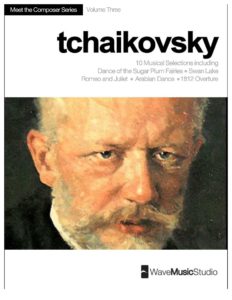 |
Tchaikovsky Piano Book 3 |
| Tchaikovsky Piano Concerto No 1 1st Mvmt (Arr For 2 Pianos) (Musescore File).mscz | ||
| Tchaikovsky Piano Concerto No 1 Rachmaninoffs Piano Concerto No 2 With Orchestral Reduction For Second Piano |
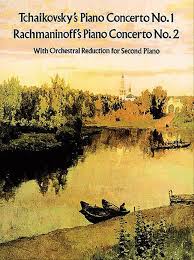 |
|
| Tchaikovsky Piano Concerto No. 1 Easy Piano Solo Arr. (Musescore File).mscz | ||
| Tchaikovsky Piano Concerto No. 1, easy piano solo arr. | Tchaikovsky Piano Concerto No. 1, easy piano solo arr. | |
| Tchaikovsky Romeo and Juliet Overture Fantasy Arr. for 2 pianos |
 |
|
| Tchaikovsky Romeo and Juliet Overture Fantasy Arr. for 2 pianos.mscz | ||
| Tchaikovsky Serenade For Strings 1st Mov. (Musescore File).mscz | ||
| Tchaikovsky Serenade for strings op. 48 Waltz Piano Solo arr | Tchaikovsky Serenade for strings op. 48 Waltz Piano Solo arr | |
| Tchaikovsky Swan Lake Piano Solo Arr. Main Theme.mxl | ||
| Tchaikovsky Symphony n. 6 Op. 76 (paino solo arr. by Pachulski) |
 |
|
| Tchaikovsky Symphony No. 6 4th Movement (Piano Solo) (Musescore File).mscz | ||
| Tchaikovsky The Man And His Music David Brown Book |
 |
|
| Tchaikovsky The Nutcracker Suite Op 71a Schirmer Performance Ed. Series Transcribed for Piano Solo |
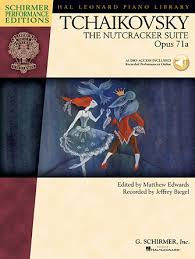 |
|
| Tchaikovsky Waltz Of The Flowers From The Nutcracker (Piano 4 Hands) (Musescore File).mscz | ||
| Tchaikovsky-Vedernikov Symphony No 6 ”Pathetique” In B Minor Op 74 (Arranged For Piano) | Tchaikovsky-Vedernikov Symphony No 6 | |
| Tchaikovsky, Guide to the practical study of Harmony (1900) |
 |
|
| Tea For Two (Musescore file).mscz | Musescore File | |
| Tea for Two Piano and lyrics Youmans and Caesar (Jazz Standard) | Tea for Two Piano and lyrics Youmans and Caesar (Jazz Standard) | |
| Tea for Two Piano Vocal Chords by Youmans and Caesar (Jazz Standard) | Tea for Two Piano Vocal Chords by Youmans and Caesar (Jazz Standard) | |
| Teach Yourself Rock Piano (Professional Know-How) |
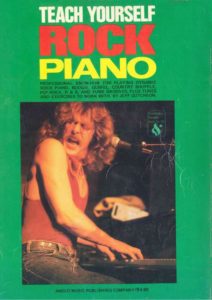 |
|
| Teach Yourself Visually Piano (Mary Sue Taylor, Tere Stouffer) Sheet Music |
 |
Teach Yourself Visually Piano (Mary Sue Taylor, Tere Stouffer) Sheet Music |
| teach yourself_.Jazz Piano Comping by Al Stevens for cocktail, combo and big band pianist |
 |
|
| Teardrops (Gabriel Thorn) | ||
| Tears For Fears – Head Over Heels | ||
| Tears For Fears – Mad World | ||
| Tears For Fears Mad World Piano Solo | Tears For Fears Mad World Piano Solo | |
| Tears For Fears Tears Roll Down Greatest Hits 82 92 |
 |
Tears For Fears Tears Roll Down Greatest Hits 82 92 |
| Technic Is Fun Book 1 Late Elementary By David Hirschberg |
 |
Technic Is Fun Book 1 Late Elementary By David Hirschberg |
| Techniques Of Improvisation 1 by David Baker |
 |
|
| Ted Gioia The Jazz Standards A Guide To The Repertoire |
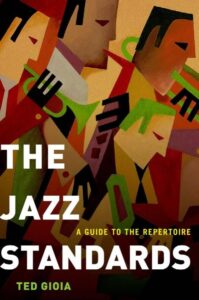 |
|
| Ted Greene Jazz Guitar Single Note Soloing Vol 1 |
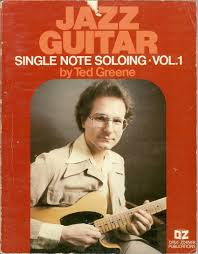 |
|
| Ted Greene Jazz Guitar Single Note Soloing Vol 2 |
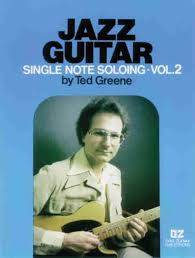 |
|
| Ted Greene Modern Chord Progressions Jazz and Classical Voicings for guitar |
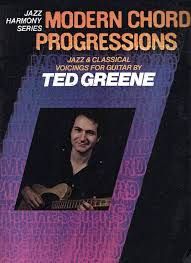 |
|
| Ted Greene My Funny Valentine Guitar Tablatur TABs |
 |
|
| Ted Greene O Come All Ye Faithfull Guitar With Chords | Ted Greene O Come All Ye Faithfull Guitar With Chords | |
| Ted Greene Solo Guitar Transcriptions Legendary Guitarist’s Recording Debut |
 |
Ted Greene Solo Guitar Transcriptions Legendary Guitarist’s Recording Debut |
| Teddy Wilson 19 Selected Piano Solo Transcriptions |
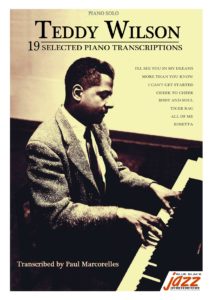 |
Teddy Wilson piano solo transcriptions |
| Teddy Wilson 5 Original Piano Solos Transcribed Vintage Sheet Music (1942) |
 |
|
| Teddy Wilson Collection 12 Transcriptions |
 |
Teddy Wilson Collection 12 Transcriptions |
| Teddy Wilson Piano Creations Of Standards Songs |
 |
Teddy Wilson Piano songbook |
| Teddy Wilson Piano Patterns |
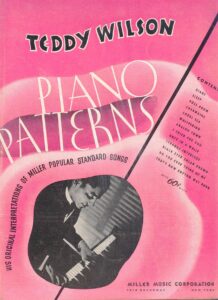 |
Teddy Wilson Piano Patterns |
| Tema di Ada (Novecento OST) Ennio Morricone | ||
| Tema di Elisa (Elisa di Rivombrosa OST) Savio Riccardi | ||
| Tema di Francesca – La moglie più bella OST (Ennio Morricone) | ||
| Temptations – My Girl | ||
| Tenderness In The Air – From Final Fantasy V By Nobuo Uematsu (Musescore File).mscz | ||
| Tendre Marie-Charlotte – L’incorrigible OST (Georges Delerue) | ||
| Tenero abbraccio – Elisa di Rivombrosa OST (Savio Riccardi) | ||
| Tennessee Whiskey By Linda Hargrove and Dean Dillon Piano Vocal Guitar Chords |
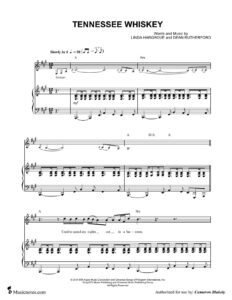 |
|
| Tenor Saxophone 20 Jazz Etudes Vol 1 Tenor by Gregory B. Taylor Jr. |
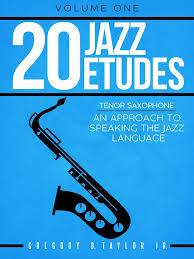 |
|
| Teoria Musical – Contrapunto – Alan Belkin (Spanish-Español) | Book Theory | |
| Teoria Musical Para Dummies + MP3 (Spanish-Español) Michael Pilhofer-Holly Day |
 |
|
| Teoria Musical y Armonía Moderna Vol 2 (Enric Herrera) Español – Spanish |
 |
|
| Teoria Musical y Armonia Moderna Vol.1 Enric Herrera (Español – Spanish) |
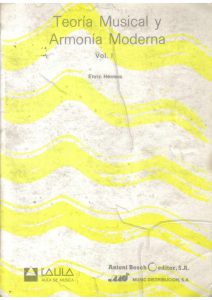 |
|
| Terence Snider – Take Five (by Paul Desmond) transcription |
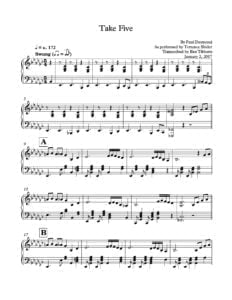 |
|
| Terrence Shider – Wave (Jobim) Sheet Music transcription | Terrence Shider – Wave (Jobim) Sheet Music transcription | |
| Terry Burrows – How To Read Music (with audio MP3) |
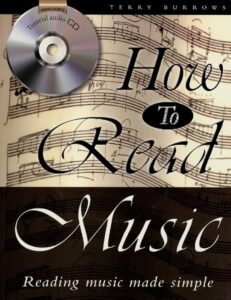 |
Terry Burrows – How To Read Music |
| Terry Riley Keyboard Study No. 2 | Terry Riley Keyboard Study No. 2 | |
| Terry Riley Sunrise of the Planetary Dream Collector Full Score |
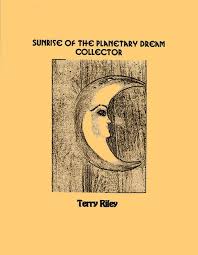 |
|
| Terry Scott Taylor Klaymen’s Theme | Terry Scott Taylor Klaymen’s Theme | |
| Tete Montoliu – Au Privave |
 |
|
| Tete Montoliu – Feelings (Morris Albert) |
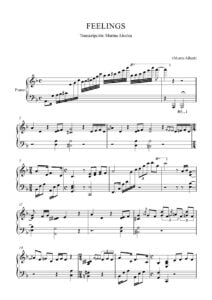 |
Tete Montoliu Feelings (Morris Albert) |
| Tete Montoliu – Feelings – My Way – Au Privave compilation |
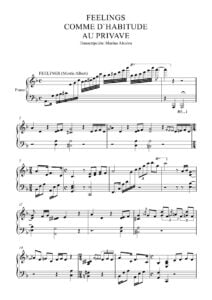 |
|
| Tete Montoliu – It Never Entered My Mind |
 |
|
| Tete Montoliu – My Way – Comme D’Habitude |
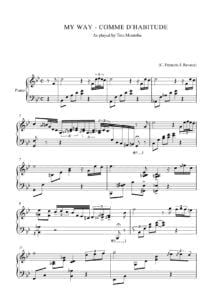 |
|
| Tete Montoliu A Child Is Born |
 |
|
| Tete Montoliu Giant Steps |
 |
|
| Tete Montoliu When I Fall In Love – Victor Young |
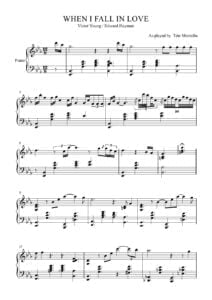 |
|
| Tetris – Tetris Main Theme Piano Sheet Music |
 |
|
| Tetris Theme Korobeiniki (Piano Solo Tiles Arr.) |
 |
|
| Texas – Black Eyed Boy | ||
| Texas Blues Guitar (Book) Albert Collins, Lighnin Hopkins, Freddie King Mance Lipscomb |
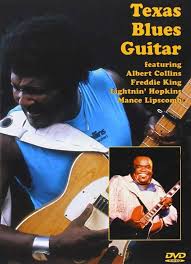 |
|
| Texas Blues Guitar By Robert Calva (With Tab) |
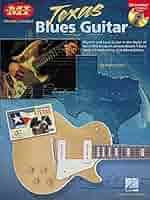 |
Texas Blues Guitar By Robert Calva (With Tab) |
| Texas Say What You Want | Texas Say What You Want | |
| Texas Southside Guitar Songbook with Tablature |
 |
Texas Southside Guitar Songbook |
| The Most Requested Jazz Standards (75 songs) pdf |
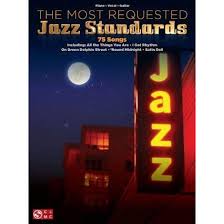 |
The Most Requested Jazz Standards |
| The 100 Most influential Musicians of all Time (Brittanica Guide to) Book |
 |
|
| The 70’s Rock Score |
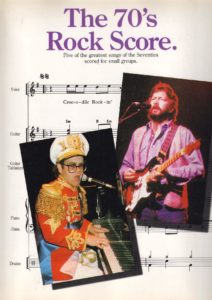 |
|
| The Accidental Tourist – A Second Chance – John Williams | ||
| The Act Of Touch In All Its Diversity An Analysis And Synthesis Of Pianoforte Tone Production (By Tobias Matthay) (1903) |
 |
|
| The Addams Family – Love On A Tombstone – Marc Shaiman | ||
| The Addams Family The Musical by Andrew Lippa Vocal Selections |
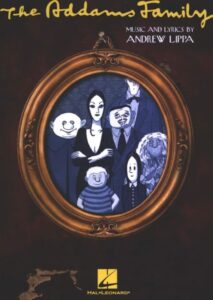 |
The Addams Family The Musical by Andrew Lippa Vocal Selections |
| The Addams Family Theme by Vic Mizzy Piano Vocal | The Addams Family Theme by Vic Mizzy Piano Vocal | |
| The Addams Family Theme Piano Solo |
 |
|
| The Ahrens & Flaherty Songbook For Piano Vocal And Chords |
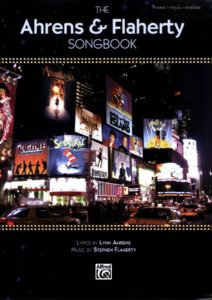 |
|
| The Alan Parsons Project – Sirius (Musescore File).mscz | ||
| The Alchemist (Russel Watson & Lara Fabian) | ||
| The All Time Best Collection vol. 3 | The All Time Best Collection vol3.PDF | |
| The alley cat (Liberace) | ||
| The Angel (Lust, Caution OST) Alexandre Desplat | ||
| The Animals – House Of The Rising Sun | The Animals – House Of The Rising Sun | |
| The Aristocrats Blues Fuckers Guitar Tabs Pdf |
 |
|
| The Aristocrats Cocktail Umbrellas Guitar Tabs |
 |
|
| The Aristocrats And Finally Guitar Tabs |
 |
|
| The Aristocrats Bad Asteroid Guitar Tabs |
 |
|
| The Aristocrats Dance Of The Aristocrats Guitar Tabs |
 |
|
| The Aristocrats Get It Like That Guitar Tabs |
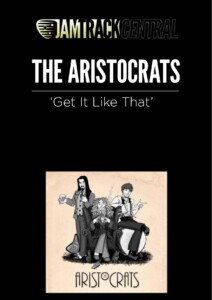 |
|
| The Aristocrats Living The Dream Culture Clash Guitar Tabs |
 |
|
| The Aristocrats Sweaty Knockers Guitar Tabs |
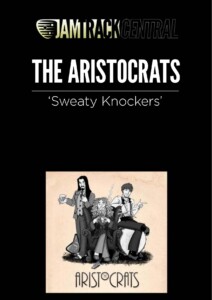 |
|
| The Art And Music Of John Lennon Peter Doggett (Book) |
 |
|
| The Art Of Blues Solos by Robben Ford (Guitar with Tablature) |
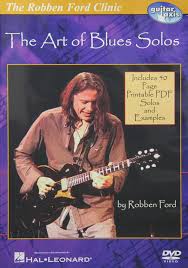 |
The Art Of Blues Solos by Robben Ford (Guitar) |
| The Art Of Improvisation (Organ) – by T. Carl Whitmer |
 |
|
| The Art of Jazz improvisation book 1 Bob Taylor |
 |
|
| The Art of Jazz improvisation book 2 Bob Taylor |
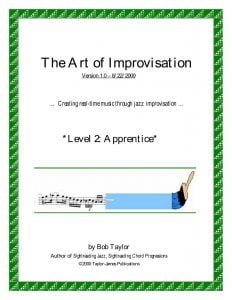 |
|
| The Art Of Music – Cambridge Library Collection (Book) |
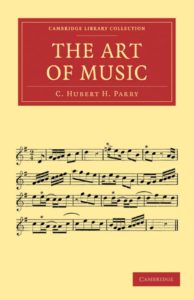 |
|
| The Art Of Partimento |
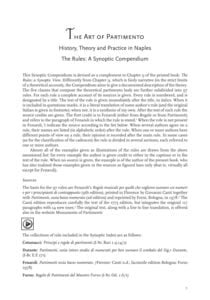 |
|
| The Art Of Piano Fingering A New Approach To Scales And Arpeggios (Penelope Roskell) Book |
 |
|
| The Art Of Piano Playing Heinrich Neuhaus Book |
 |
|
| The Art Of Piano Playing – A Scientific Approach by George Kochevitsky (1996) |
 |
|
| The Art Of Pianoforte Playing (By Ernst Pauer) (1877) |
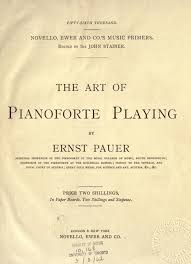 |
|
| The Art of Ragtime Guitar with MP3 audio tracks with Tablature |
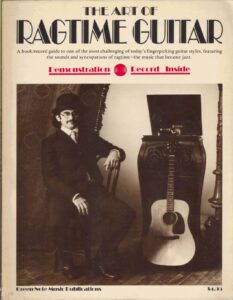 |
The Art of Ragtime Guitar with MP3 audio tracks sheet music pdf |
| The Art Of The Player-Piano – A Text-Book For Student And Teacher (By Sydney Grew) (1922) | ||
| The Artist At The Piano (George Woodhouse) (1910) |
 |
|
| The Atlas March Cloud Atlas (piano solo) Tom Tykwer | The Atlas March Cloud Atlas (piano solo) Tom Tykwer | |
| The Augmented Scale In Jazz A Players guide for all instruments by Walt Weiskopf And Ramon Ricker |
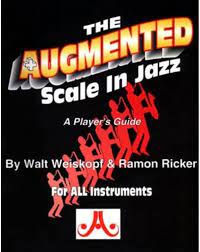 |
|
| The Authentic Guitar Style Of Harry Chapin With Tabs |
 |
The Authentic Guitar Style Of Harry Chapin With Tabs |
| The Avett Brothers Best Of The Avett Brothers Songbook |
 |
The Avett Brothers Best Of The Avett Brothers Songbook |
| The Band Music and Music From Big Pink Piano Vocal Guitar Chords |
 |
The Band Music and Music From Big Pink Piano Vocal Guitar Chords |
| The Bangles – Eternal Flame | ||
| The Beach Boys Pet Sounds |
 |
The Beach Boys Pet Sounds |
| The Beatles Beatles Collection Band Score Arr Johan De Meij |
 |
|
| The Beatles Sgt Pepper’s Lonely Hearts Club Band Guitar Tablature (13 Songs) |
 |
|
| The Beatles Songbook (Full Band Score) |
 |
|
| The Beatles Strawberry Fields Forever As Played By Andy Timmons Guitar With Tabs | The Beatles Strawberry Fields Forever As Played By Andy Timmons Guitar With Tabs | |
| The Beatles The Symphonic Beatles (Concert Band Series Conductor Score) |
 |
|
| The Beatles Basslines – Transcribed by Phil Mulford |
 |
The Beatles Basslines – Transcribed by Phil Mulford |
| The Beatles Revolver (Guitar songbook with Tablature) |
 |
The Beatles Revolver (Guitar songbook) |
| The Beatles – A Hard Days Night | ||
| The Beatles – Across The Universe Easy Solo Piano |
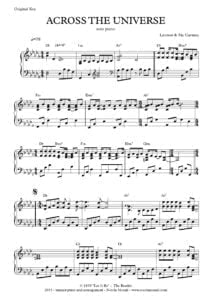 |
|
| The Beatles – All Songs 1962-1974 (piano, vocal & guitar) |
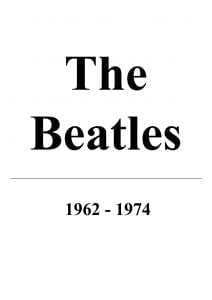 |
The The Beatles – All Songs 1962-1974 (piano-vocal) |
| The Beatles – All The Songs The Story Behind Every Beatles Release |
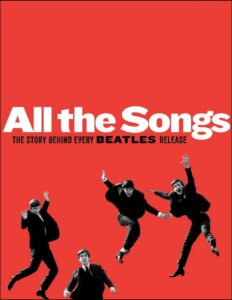 |
The Beatles – All The Songs The Story Behind Every Beatles Release |
| The Beatles – BLACKBIRD Jazzy ver. | The Beatles – BLACKBIRD Jazzy ver. | |
| The Beatles – Complete Scores Full Transcriptions from the original recordings (Every Song written & recorded by The Beatles) |
 |
|
| The Beatles – Complete Songbook For Guitar, Tabs And Chords |
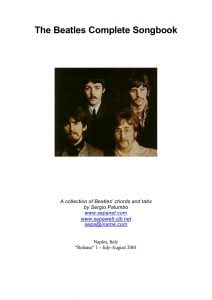 |
The The Beatles – Complete Songbook For Guitar, Tabs And Chords |
| The Beatles – Eight Days A Week |
